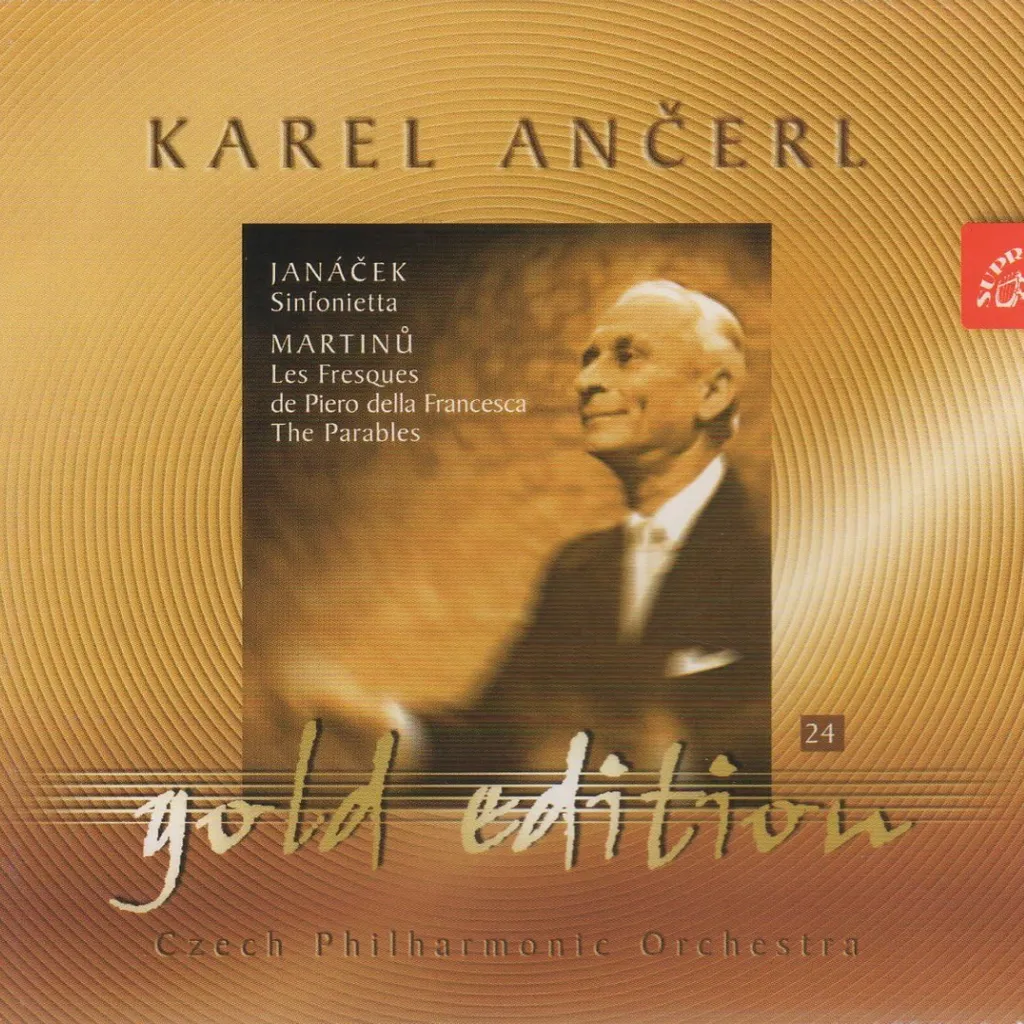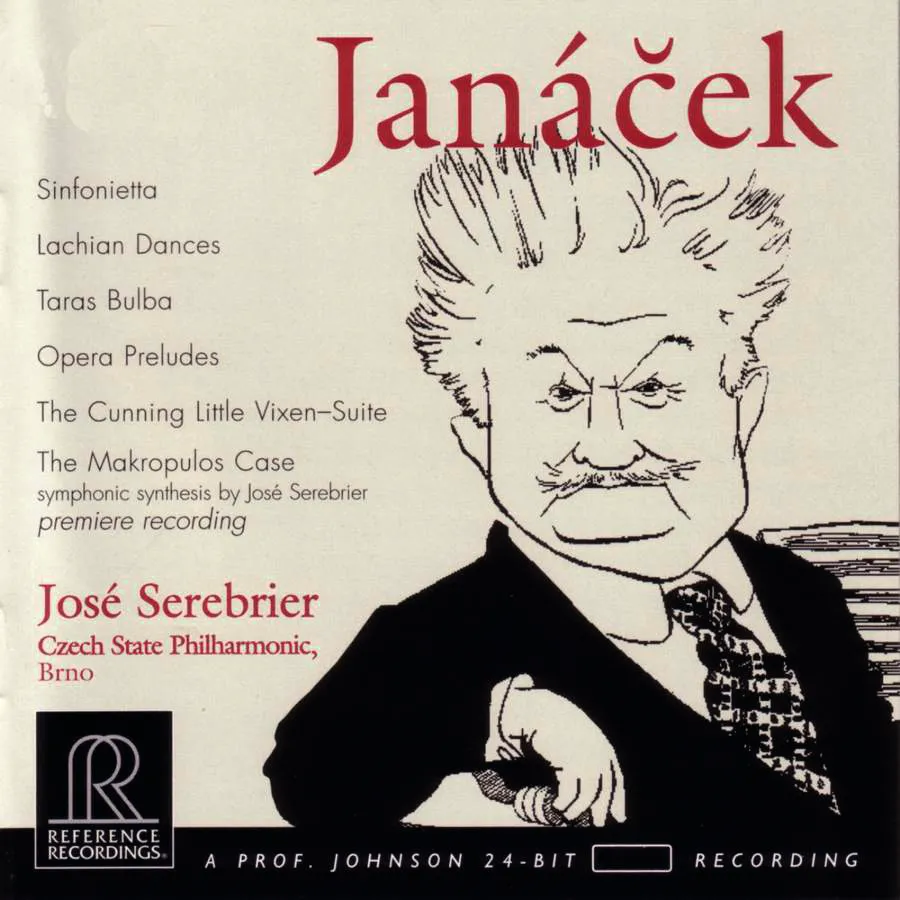We take an in-depth look at the marvellous Sinfonietta, one of the most distinctive works (and that's saying something) by the great 19/20C Czech composer Leoš Janáček.
Who was Leoš Janáček?
Leoš Janáček was a Czech composer, musical theorist, folklorist and teacher, active in the late 19th and early 20th centuries. Composing across various musical forms including the string quartet, orchestral music, sacred music and, perhaps most famously, opera. We named Janáček as one of the ten best Czech composers of all time.
Born in 1854 in Hukvaldy (near Ostrava in the modern-day Czech Republic) Janáček was a late developer as a composer. His earlier adult years were spent as an organist and teacher, founding the Brno Organ School in 1881, and in devoting himself to the study of Moravian folk music.
Though as a young man he did travel to both Leipzig and Vienna to study, Janáček returned home from both having achieved fairly little. It wasn’t until the turn of the 20th century that, at last, he started to win acclaim as a composer, and even then his progress was hindered by a scathing review he had written back in 1887 about the opera The Bridegrooms by Karel Kovarovic, who still held a grudge…
In 1904, the 50-year-old Leoš Janáček enjoyed his first triumph on home ground with Jenufa, a tragic opera of rustic life, the music score of which closely followed the speech-rhythms of his native Moravia. (We named Jenufa one of the 20 greatest operas of all time). This set the pattern for almost everything that followed.
It was premièred to great acclaim in Janáček’s native city of Brno, but because of his long-standing dispute with Karel Kovarovic, director of Prague’s opera house, Jenufa wasn’t heard in the capital until 1916. Productions in Vienna and Cologne, albeit in a bastardised German translation, took place in 1918, the year which saw the birth of Czechoslovakia and Janáček’s belated appearance on the international stage.
Why did Janáček compose his Sinfonietta?
His late great works, which include the Sinfonietta, were composed in the last decade of his life in what amounted to a creative frenzy almost unparalleled in musical history. Having discovered his own voice, he abandoned most of the recognised norms of composition. Instead, his notebooks were crammed with snatches of Moravian folk song and what he called 'speech melody' and his observations on the rhythm of natural sounds, birdsong and daily life.
- Classical music inspired by nature: six of the best
- Classical music inspired by nature, weather, thunderstorms and wind
The creative burst of energy in his old age was thanks largely to his infatuation with Kamila Stösslová, a happily married woman 38 years his junior, whom he met in 1917 and who became the muse for virtually everything he composed thereafter. She was his inspiration for the female protagonists in his operas Káťa Kabanová (1921), The Cunning Little Vixen (1923) and The Makropulos Affair (1925); and for his most passionate, personal utterances, the two string quartets entitled Kreutzer Sonata (1923) and Intimate Letters (1928).
His obsessive love was no secret and must have strained not only his already precarious marriage but the outwardly friendly relationship between the Janáčeks and the Stösslovs. However, it never developed into a love affair.
What is Janáček's Sinfonietta about?
It was on an afternoon walk in Stösslová’s home-town of Písek that Kamila and Janáček stopped to listen to a military band in the local park. The brass fanfares made a great impression on the composer and when a year later he was invited to write a short piece for the forthcoming Sokol Festival, a national gymnastic display which commemorated Czech independence, not only did he produce a fanfare for brass and timpani, but he added a further four movements to what he called his ‘Military Sinfonietta’.
It was first performed by the Czech Philharmonic Orchestra in 1926, by which point, the ‘military’ part of the title had already been dropped. Nonetheless, at that premiere, Janáček instructed conductor Václav Talich to emphasise the militaristic timbre of the brass.
‘A nice little sinfonietta with brass’ was how Janáček described his latest work. However, there is nothing ‘little’ about it – the brass contingency alone comprises nine trumpets in C, three trumpets in F, two bass trumpets, four horns, four trombones, two tubas and bass tuba. Added to that are three flutes, piccolo, two oboes, two b flat clarinets, bass clarinet, two bassoons, cor anglais, timpani, chime bells, cymbals (a single smash in the finale) and harp, as well as the usual complement of strings.
Which city does the Sinfonietta depict?
The Sinfonietta is dedicated to the Czech military, but it is also a celebration of everything Czech and perhaps, in some way, a self-portrait – in his own words, Janáček wished ‘to exalt the free Czech man in his beauty, joy and strength’. The brass and timpani bombardment of the opening ‘Fanfare’ heralds a suite of four movements – ‘The Castle’, ‘The Queen’s Monastery’, ‘The Street’ and finally ‘The Town Hall’ – all of which seem to constitute a musical tour of the city of Brno.
‘The aura of liberty glows above the city,’ wrote Janáček. ‘The peal of victorious trumpets, night shadows, the breathing of the green hill, the vision of vigour and freedom – out of this vision was born my Sinfonietta.’
The composer’s characteristic obsessive use of ostinato dominates throughout, pre-dating Minimalism by half a century.
He favours the highs and lows of the orchestral spectrum, sometimes ignoring middle frequencies altogether. At all times the music moves forward, gathering urgency and momentum towards a coda that is a blaze of hedonistic joy.
The scratchy, almost indecipherable autograph score for the opening fanfares could easily be mistaken for drawings made by the 20th-century American artist Cy Twombly, but out of this chaos emerged an order and cohesion which guaranteed Janáček’s place in musical history as one of its true originals. When, near the end of his life, he was asked which composers had most influenced him, he replied, ‘None’.
The best recordings of Janáček Sinfonietta
Karel Ančerl (conductor)
Czech Philharmonic Orchestra Supraphon SU36842
Not a name immediately associated with Janáček, Otto Klemperer was largely responsible for promoting the composer outside Czechoslovakia and he conducted the New York and Berlin premières of the Sinfonietta in 1928. His German Expressionist view of the work with the Concertgebouw Orchestra (1951) is more than just a historic musical document. However, it was the Pro Arte Orchestra’s pioneering recording of 1959 in all-important stereo, the first of the Australian Charles Mackerras’s three accounts, which alerted music-lovers and record companies to Janáček’s genius, and today, the catalogue boasts a healthy number of Sinfonietta recordings.
Karel Ančerl’s 1961 recording for the Czech Supraphon label was one of the first to enter the lists, setting a standard in terms of performance that has not been surpassed. An Auschwitz survivor, Ančerl succeeded Rafael Kubelík as chief conductor of the Czech Philharmonic in 1950 and, of the triumvirate of great Czech conductors who stood before the CPO from 1918-68 – Václav Talich, Kubelík and then Ančerl – he was the most progressive. Initially resistant to his exacting demands and adventurous repertoire, the orchestra went on to achieve international renown as one of the finest European orchestras to emerge after World War Two.

In this incandescent account of Janáček’s Sinfonietta, Ančerl’s exceptional qualities as a conductor are everywhere apparent: an inevitability of purpose, an instinctive feel for the right tempos, a mastery of orchestral balance, texture and colour and the sheer love of making music at the very highest level with colleagues he revered and who, in turn, revered him.
On this recording, listen out for the characteristic Czech woodwind timbre of the pre-Glasnost era in all its rustic glory. Shattering the fond illusions of many listeners, it later transpired that their distinctive sound was simply down to antiquated instruments, but sub-standard kit or not, the winds are stunning throughout, whether trilling like nightingales or screaming like banshees on steroids. There is also a modicum of vibrato from the brass, another characteristic missing from today’s more homogenous-sounding CPO.
Expect, too, to be swept along in a torrent of glorious sound from an orchestra that has this music coursing through its veins. Very well recorded in the warm acoustic of Prague’s Rudolfinum, this phenomenal account has easily stood the test of time and fully deserves its classic status.
Rafael Kubelík (conductor)
Bavarian Radio Symphony Orchestra Orfeo C552011
Rafael Kubelík’s studio recording with the Bavarian Radio Symphony Orchestra for Deutsche Grammophon is superb in all respects, but this live Orfeo account from 1981, very well recorded in Munich’s Herkulessaal, has an extra injection of adrenalin and risk which just tips the balance in its favour. The opening brass and timpani fanfares raise the highest expectations which are triumphantly met. Woodwind solos are delicious and the string and brass playing are simply phenomenal. What may prove the clincher for some is the coupling with a fabulous performance of Dvořák’s Sixth Symphony.
Charles Mackerras (conductor)
Czech Philharmonic Supraphon SU 3739-2032 (2 discs)
His third and best, this Charles Mackerras 2014 live recording rates above his famous 1981 Decca version, mostly because of its sound quality. Whereas Decca made strong claims for the superiority of digital over analogue, by today’s standards it sounds somewhat synthetic. Supraphon provides a natural concert-hall perspective which is wholly satisfying.
The performance is even more exciting and uplifting, a fitting memorial to Mackerras’s lifelong advocacy of Janáček. At the helm of his beloved Czech Philharmonic, he nearly convinces us that all is well with the world. The disc highlighted here is packed with other wonderful Janáček performances: Mackerras knew and loved his Czech music like few others.
José Serebrier (conductor)
Czech State Philharmonic Orchestra Brno Reference Recordings RR-2103
If you crave sonic splendour, ignore José Serebrier’s superb recordings of Janáček’s orchestral works at your peril. The Uruguayan-born conductor, a one-time assistant to Leopold Stokowski, certainly knows a thing or two about orchestral colour and, at the helm of the Czech State Philharmonic Orchestra Brno, he delivers a Sinfonietta which is as exhilarating as any.

The spectacular 2001 sound quality, meanwhile, is another feather in the cap of Reference Recordings’ peerless engineer Keith O Johnson. Janáček-loving audiophiles are in for a real treat here.
Which rock song uses Janáček Sinfonietta?
That would be Knife-Edge by prog-rock giants Emerson, Lake and Palmer, from the trio's eponymous first album. It's based on the Sinfonietta's first movement: you can hear that distinctive melody being deftly reinvented here (and spot the segment of Bach around the three-minute mark):
Highly trained musicians all, ELP were rarely afraid to work classical music into their prog-rock epics. Their third album Pictures at an Exhibition features their own live interpretation of Musorgsky's Pictures at an Exhibition, while 1976's Works Volume 1 includes Emerson's 18-minute, three-movement Piano Concerto No. 1, plus Palmer's covers of pieces by Prokofiev and Bach.
